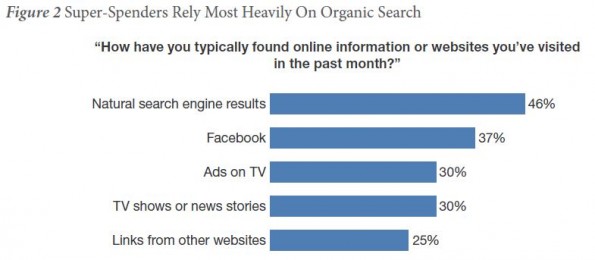By adaptive - January 7th, 2015
Reaching consumers via social media means understanding how their social activity is just one component of shopping behaviour.
According to a new report from Forrester that quizzed nearly 5,000 US adults about how they searched for information about goods and services, organic search came out on top with Facebook in second place. Traditional searched polled 36% of the vote with Facebook securing 25% with TV ads coming in bronze position with 23%.

Facebook factor
Social ads
Next Reads
June 2015, New York
With over 50 expert speakers (including 15 CMOs and CCOs) from the world’s most social brands, and 300+ of your corporate peers in attendance, #CSMNY offers unrivaled learning, networking and benchmarking opportunities. It is truly THE social media event of year.
Brochure Programme
